I Dig Sports
From Barkley to Embiid: The fight to modernize the NBA big man
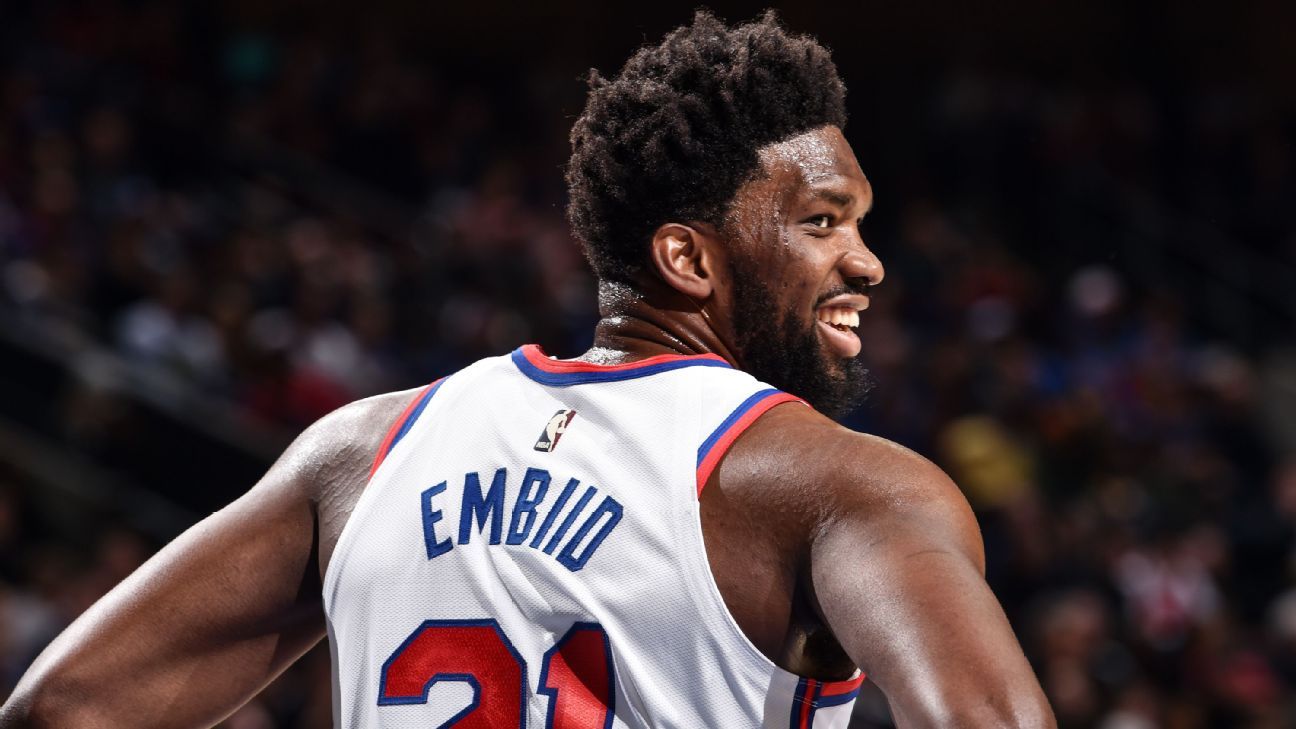
JOEL EMBIID RELISHES the opportunities to launch 3-pointers. The execution of that shot, the 7-foot Philadelphia 76ers center believes, classifies him as a modern NBA player, a multifaceted big man whose skills and athleticism should not -- and will not -- confine him to a small, defined patch of basketball real estate on the block.
Embiid also confesses that what he craves nearly as much as knocking down those treys is to lure players into believing he is about to release the 3. He does this with a most curious pump fake: hoisting the ball well above his head, then unfolding ever so slowly, like a rusty crane squeaking in protest for a dose of WD-40.
Often, it's a fellow big man who is ambling out to contest that shot, at which point a giddy Embiid unleashes his superior speed to blow past his defender with two hard dribbles and a dunk. If the big stays home, Embiid surveys the rim, lines up his elbow, and lets it fly.
And, in that moment, a generation of the best post players in the game's history emits a collective groan.
"Get in, get your butt on the block and dominate," an exasperated Patrick Ewing says.
"When he shoots 3s," Charles Barkley says, "I guarantee the defender is like, 'Man, that was so easy.'
"It's so stupid not to use your big man. No. 1, if you have a guy who is great, he can't be stopped in the post one-on-one. He's going to draw a double-team and you will get wide-open 3s. Or he's going to get the other team in foul trouble. I just don't think these big guys are using their brains."
For Barkley, it doesn't matter that Joel Embiid averages more post touches than any other player in the NBA. It doesn't matter that the only others who are remotely close to his 10.4 touches a game are San Antonio Spurs big man LaMarcus Aldridge (9.7) and Los Angeles Lakers star Anthony Davis (9.2).
To traditionalists, that Embiid's numbers are a far cry from the halcyon days of Wilt and Kareem and Moses and Shaq is the problem. Theirs was an era of big men who routinely torched opponents with their backs to the basket, so dominant in the paint they were referenced on a first-name basis by an adoring basketball public.
No longer. The low-post big man is a dying breed in the NBA. And if the numbers continue to follow current trends, it could well be extinct within five years.
READ: How MJ and elite players handle pressure
THE LIGHTNING ROD is Embiid.
Hall of Fame centers can't fathom why players such as Spencer Dinwiddie and Shai Gilgeous-Alexander spend more time in the paint than the Sixers center does. Modern NBA strategists contend that Embiid could become the signature big man of the next decade by embracing his developing prowess from the perimeter. Sixers coach Brett Brown stresses he will not go old school and plant his franchise player in the key.
"One of the reasons coaches don't go to the post anymore is that it's easier to scheme against a big man other than Kevin Durant on the perimeter looking at you -- and it's not even close," Brown says. "You can double bigs easier, you can swarm them, you can hold them up knowing people are waiting on the perimeter, and the [shot] clock is evaporating.''
Yet some of the game's greatest big men push back on the notion that there's no longer a place for low-post scoring.
"You ever heard of the term cooking the books? That's what [big-man analytics] are to me," Hall of Famer Shaquille O'Neal says. "'Oh, our company is doing great. We're doing this. And we're doing that,' when actually it's a bulls--- company.
"My contention is that if a big man comes in and wants to dominate, he can dominate -- and easily. Because we have shifted away from physicality, teams don't know how to play [that style] anymore.
"If the right big man comes in, it'll be back like the old days, where he will be a guy you've got to change your defenses for."
O'Neal says Embiid could be that dominant force, but only if he eschews the 3-point line and backs his man into the paint instead.
Dominance, in this context, is shaking the rim and bludgeoning an opponent in the paint.
But the game is changing, Embiid counters, and big men need to be able to face up and shoot the ball, put it on the floor, and act as a facilitator when they're double-teamed.
"We need to be able to do everything on the basketball court," Embiid says. "That's what I've been trying to do, to kind of change the narrative around big men."
Brown insists he hasn't abandoned using Embiid in the post and claims his goal is for him to have at least 15 touches a game from there. That's a fine strategy for the Sixers, but the 29 other teams do not have a Joel Embiid at their disposal.
"The numbers don't support their skill set," one NBA general manager says about big men who live primarily in the post. "They're DOA -- dead on arrival."
IF THIS ALL sounds like hyperbole, consider this: Before the NBA added the 3-point line in 1979-80, centers won 15 of the previous 16 MVP awards. No center has won MVP since 2000.
Shaq was that most recent MVP center.
Since then a lot has changed. LeBron James entered the league in 2003, the same year author Michael Lewis released "Moneyball." That book was about baseball, but its broad idea -- that analytics can be mined to gain advantage -- resonated across all sports. While James became the face of the NBA, "Moneyball" became the brains of it, and 16 years later every front office uses numbers to justify every transaction.
These same numbers that front offices use to evaluate players are also used for play types and their relative value -- and the indicators reveal why traditional big men hold less value than ever.
When judging play types available to a modern NBA offense, and play types for a modern NBA big man, post play is inefficient. It's dying off, and quickly.
In the 2013-14 season, there were 15.4 post-ups per 100 possessions, according to Second Spectrum tracking data. This season there are just 8.4 per 100 -- a 45.5% drop off in just six seasons.
Those trends become more acute when drilling down to individual players. In 2013-14, there were 20 different NBA players finishing at least five post plays per game. This season, that number is down to five -- Embiid, Aldridge, Davis, Karl-Anthony Towns and Kevin Love. The flock of bigs camping out on the low block is dwindling more each season because their coaches believe these bigs are more useful elsewhere on the floor.
The average NBA possession this season is worth 1.08 points, per Second Spectrum data. The average NBA possession that ends with a post action yields 0.96 points. In contrast, the average catch-and-shoot 3-point shot is worth 1.12 points.
In simpler terms, 3 is greater than 2, which is why an average 48-minute game this season includes 67 3-point tries and just 17 total post-ups.
Nobody has embraced the 3-point trend more enthusiastically than Houston Rockets general manager Daryl Morey. His team holds virtually every 3-point record, from single-game marks to season-long totals. Last season, Houston jacked up a record 70 3s in an overtime loss to Brooklyn.
"People say to me, 'You hate midrange shots, you hate post-ups,'" Morey says, "but that's not true. When I played in high school those were my best shots.
"We're just doing what works. We've created the top offense in NBA history over the last five seasons, so we're sticking with that."
The Golden State Warriors, for their part, created a dynasty on the marksmanship of Stephen Curry, Klay Thompson and Durant -- without featuring any meaningful presence in the paint.
"I think the NBA made a big mistake when everybody tried to model themselves after the Golden State Warriors," Barkley says. "The Golden State Warriors had the three greatest shooters who ever lived. So, everybody starts shootin' 3s. There are seven teams shooting more 3s in the last two years than the Golden State Warriors. We know the Rockets are an anomaly.
"But the notion that six other teams would shoot more 3s than the three greatest shooters that ever lived, that's stupid, and asinine."
But even the biggest stars of the 1980s, such as Julius Erving, Magic Johnson, Larry Bird and Michael Jordan, played away from the basket. Big men such as Kareem Abdul-Jabbar, Kevin McHale and Moses Malone were still valuable, but no longer the faces of their championship teams.
With each passing season, teams became more sophisticated in their schemes. The Bulls' dynasty of the 1990s was a harbinger of things to come. As Jordan teamed up with Scottie Pippen, the Bulls dominated the game from the wings, and the parade of bigs who joined them was significantly marginalized.
IT'S ALMOST INARGUABLE that 3-point shooting is the most important skill in the game right now. It affects everything from draft positions to playing time to offensive architecture. Coaches believe treys lead to offensive efficiency, and that by clogging up the areas between the paint and the 3-point line, post players clog key drive-and-kick arteries.
This realization has driven many of the league's best post players to change their games. Consider Milwaukee Bucks center Brook Lopez: In his lone All-Star season in 2013, 1% of Lopez's shots were 3s. Last season, 66% of his attempts were behind the 3-point line.
"It's amazing how much it's changed," Lopez says. "Big men now, we kinda have to do everything."
Bucks coach Mike Budenholzer has three 7-footers on his roster: Lopez, his twin brother, Robin, and reigning MVP Giannis Antetokounmpo (who is technically listed at 6-foot-11).
Antetokounmpo is the most prolific scorer in the paint since O'Neal. In fact, those two players account for the top six best seasons of points in the paint since 2000.
But Antetokounmpo is not accomplishing this by posting up. Although 65.8% of his shots come in the paint, only 7.6% of his shots come out of the post. He scores on drives, in transition, on lobs and on putbacks. He also hoists 5.2 treys a game, with the full endorsement of his coach.
"I'm a big fan of [shooting 3s]," Budenholzer says. "I feel really great about how bigs are evolving. I'm not against posting up to change our look from time to time. If we can have everything, I guess, that's what coaches and teams want. But for us, the ability to shoot and create space is a huge priority. I crave it more than anybody."
For those big men who resist, or don't possess the skills to be effective in today's NBA, they quickly become obsolete.
ROY HIBBERT'S CAREER was at its apex in May 2013. The Pacers center had dominated the New York Knicks in the Eastern Conference semifinals, averaging 13.3 points, 10.3 rebounds and 3.2 blocks a game -- none more memorable than a rousing rejection of Knicks star Carmelo Anthony at the rim in a clinching Game 6.
And although Indiana had fallen in the conference finals to James and the Miami Heat, nobody had pointed the finger at Hibbert. He had led his team in points (22.1), rebounds (10.4) and true shooting percentage (61.4) in that series. The next season, he was an All-Star and runner-up to Joakim Noah in Defensive Player of the Year voting.
But then it all turned -- dramatically. Hibbert became the poster boy for big men doomed by the pace-and-space game. The new style of play exposed his lack of mobility and quickness. Teams drew him away from the basket by positioning their bigs on the perimeter, turning the once-dominant defensive force into a liability.
Just a year after Hibbert had dominated the Eastern Conference playoffs, the 2014 postseason told a much different tale. The No. 8-seeded Atlanta Hawks, coached by Budenholzer, held Hibbert scoreless in Games 5 and 6 of their first-round series against the No. 1 Pacers. They did so by spreading the floor with five shooters, drawing the slow-footed Hibbert away from his home in the paint -- and smack into foul trouble (the Indiana center played only 153 minutes in the series after playing 277 against the Heat a season earlier).
The big man had been thoroughly humiliated. Two months later, the Pacers traded him to the Lakers.
By the end of 2016, he was a reserve whose career was hanging in the balance. A year later, he was out of the league. It was, Hibbert says now, what the NBA wanted -- more dynamic wing players and less power-based big men.
"My last year with the Pacers, [assistant coach] Popeye Jones told me that the team had a meeting with the stats guys, and they said the one-on-one post-up is the worst shot in basketball, because it's basically one and done, there's no movement," Hibbert says. "[When] you shoot 3s, there's opportunities for offensive rebounds and kickouts."
WHILE THE 3-POINT shot organically altered how the NBA game is played, the league has long implemented some pointed rules that eroded the value of the league's tallest and biggest players. The NBA outlawed goaltending (1944). It widened the lane not once, but twice (1951, 1964). And, for a time, banned zone defenses (reinstated in 2001).
But the most significant contemporary change was in 2004, when the league eliminated handchecking with a stated goal of "opening up the game." (This came after the heavily favored Lakers, featuring O'Neal and Kobe Bryant, were upset in the Finals by a physical, defensive-minded Detroit Pistons team led by big man Rasheed Wallace).
Doing away with handchecking enabled the league to legislate more scoring for perimeter players -- and it worked. In 2003-04, only Tracy McGrady (28.0) scored 25 or more points per game. The next season, the first without handchecking, seven players crossed the 25-point threshold, with 5-foot-10 point guard Allen Iverson (30.7 PPG) leading the charge. This season, there are 14 players averaging 25 or more points a game, and only one of them -- Towns -- is a center. This trend has cemented the belief of NBA analytics teams that, when it comes to defensive contact, post bigs will not be rewarded in the same way perimeter players will be.
"When we played in the '94 Finals against Houston, we were two defensive powerhouses battling," Ewing says. "But the NBA wants [the game] to be a more high-scoring affair, because they think that's more appealing to fans. So, they've changed the way the game is played."
In 2019, a defender can legally jam an arm bar into Embiid's lumbar region if he's in the low post, but if the same defender dares to lay a finger on JJ Redick's elbow behind the 3-point line, officials will nail him with a 3-shot shooting foul, literally the most punitive infraction in the game.
"A lot of the rules on how can you defend the perimeter versus inside players are pretty different,'' Morey says. "I'm not sure what the answer is. I don't even know if we actually need an answer -- the game is as good as it has ever been."
Not everyone agrees. Former big man Vlade Divac, now the general manager of the Sacramento Kings, laments, "Your guy gets manhandled [on the block], but there's no call, and at the 3-point line, you breathe on the guy wrong and it's a foul.
"Maybe if we change the rules, post play will come back."
KEVIN LOVE GREW up as a post player, watched each evolution with great interest and then came to embody it. As a 20-year-old rookie in Minnesota, Love took fewer than 3% of his shots from 3-point range; last season in Cleveland, he took 52% of his shots from downtown while hoisting up 6.7 3s per game. In his Hall of Fame career, Reggie Miller never attempted more than 6.6 per contest.
"For me, it was definitely 'adapt or die' when I got here to Cleveland," Love says. "I knew that I wouldn't be posting up as much anymore. We had two ball-dominant players, with Kyrie [Irving] and LeBron, and I had to kind of see where I fit in. I went from getting so many touches in the post, and being the primary No. 1 option, to being the third guy, and really just being a floor-spacer a lot of the time."
Love was fortunate that his father, Stan Love, an ex-NBA big who could shoot, had instructed his school-age son to develop a perimeter game along with ballhandling skills. When he made the switch to the perimeter in the NBA, Love says it was an equally big adjustment on the defensive end of the floor.
"I had never really played or defended that far out from the basket," Love says. "You're having to switch off onto a Klay Thompson. You have to switch to Steph Curry. Kevin Durant. Even though you're a 4- or 5-man, you really have to do that -- or you're dead in the water."
The new breed of big men continued to evolve. In 1998, a rookie center from Germany named Dirk Nowitzki, turned the notion of a big man on its ear. While Nowitzki was an average rebounder and a marginal shot-blocker, he dominated from behind the 3-point line like no other 7-footer before him.
Suddenly, the possibilities for shooting bigs were endless.
SHAQUILLE O'NEAL REMEMBERS to duck at the last moment as he strides through the doorway of the Atlanta Ritz-Carlton, where his friend and television partner Charles Barkley is seated. The two massive men dwarf the room, squeezing onto a seemingly doll-sized settee as they banter on the topic at hand -- guys like Embiid shooting 3s.
"He frustrates me the most!'' Barkley exclaims. "He could be the best player in the NBA.''
O'Neal smiles slyly.
"Those 3s are pretty,'' he says, as Barkley howls. "But you're supposed to punish guys.''
Size used to matter, almost more than anything. Not anymore, Mavericks owner Mark Cuban says.
"The analytics don't specify whether it's a big, or a small, or a medium-sized guy," Cuban says. "Analytics are driven by the skill set of the player and the team.
"Right now, if you're a decent shooter -- regardless of your height -- you're better off shooting a 3."
What is the future of the big man in a league in which Dallas leads the league in scoring, and its newly acquired 7-foot-3 stud drains 40 footers? Is there still a place for a dominant post-up player?
"When [Joel Embiid] shoots 3s, I guarantee the defender is like, 'Man, that was so easy.'" Charles Barkley
The majority of former big men interviewed point to Embiid as the game's best hope. Brown says his big man's post play remains a work in progress.
"So, what does Joel have to do to make this work?" Brown says. "First, he has to be a willing passer. Then it's on the coach to space it properly. He has to be a willing quarterback, and be aware of timing, sense the double-team.
"The notion that, 'Oh, [Joel] floats too much,' well, he does a little. When it ends up being dramatic is when it's 98-98 with two minutes left and, people say, 'What's he shooting a 3 for?' That's a little bit true, because it's in a more pronounced environment. But at 98-98 you know he's going to be doubled. For sure."
The prospect of being doubled in today's NBA leaves O'Neal salivating at the opportunity. Give him a chance, Shaq says, and he'd take total command of the key.
Asked what he would do if O'Neal was on his roster, Morey answers, "I would give him the ball 1,000 times, is my guess. Is he coming? Can I draft him somewhere?"
While Shaquille O'Neal isn't walking through that door, perhaps we're focused on the wrong big man.
"I would actually love to play in this NBA," O'Neal says. "I would bring a little bit more physicality. I would bring my length, I would bring my athletic-ness. So, before you say, 'Shaq can't play in this era today,' I'm already playing.
"My name is Giannis Antetokounmpo."

Plan your diary for the Olympic and Paralympic year ahead with these key dates for leading international and British events
Whether you plan to participate or spectate, get set for the year ahead with our guide to some of the key athletics events in 2020.
January
25 Boston Games
31 Karlsruhe indoor meet
February
1 BUCS Cross Country, Edinburgh
4 Dusseldorf indoor meet
8 Millrose Games, New York
11 Stockholm indoor meet
14-15 US Indoor Championships, Albuquerque
14-16 BUCS Indoor Championships, Sheffield
15 Müller Indoor Grand Prix, Glasgow
19 Lievin indoor meet
21 Madrid indoor meet
22 Saucony English National, Nottingham
22-23 Spar British Indoor Championships, Glasgow
29 US Olympic Marathon Trials, Atlanta
Photo by Mark Shearman
March
7 Inter-Counties Championships, Prestwold Hall
13-14 NCAA Indoor Championships, Albuquerque
13-15 World Indoor Championships, Nanjing
14 English Schools Cross Country, Liverpool
15-21 European Masters Indoor Championships, Portugal
21-22 European Throws Cup, Leiria
29 World Half Marathon Champs, Gdynia
April
5 Great Ireland Run
16-18 Mt Sac Relays, USA
17 Doha Diamond League
20 Boston Marathon
26 Virgin Money London Marathon
Photo by London Marathon
May
1-2 National Athletics League weekend
2-3 World Race Walking Team Champs, Minsk
8-10 BUCS Championships, Bedford
10 Tokyo Continental Tour
13 Nanjing Continental Tour
16 Shanghai Diamond League
22 Ostrava Continental Tour
24 Great Manchester Run
24 Stockholm Diamond League
28 Rome Diamond League
30-31 Götzis Hypo-Meeting, Austria
31 Rabat Diamond League
June
1 Hengelo Continental Tour
6 European 10,000m Cup, Highgate
7 Eugene Diamond League
9 Turku Continental Tour
10-13 NCAA Champs, Austin
11 Oslo Diamond League
13 National Athletics League weekend
13 Kingston Continental Tour
13 Paris Diamond League
19-28 US Olympic trials, Eugene
20-21 British Championships, Manchester
Photo by Victah Sailer
July
4-5 London Anniversary Games
4-5 National Athletics League weekend
4 European Mountain Running Champs, Cinfaes
7 Szekesfehervar Continental Tour
7-12 World U20 Champs, Nairobi
10 Monaco Diamond League
16-19 European U18 Champs, Rieti
20-Aug 1 World Masters Champs, Toronto
31-Aug 9 Olympic Games athletics, Tokyo
August
16 Gateshead Diamond League
20 Lausanne Diamond League
25-30 European Champs, Paris
25-Sep 6 Paralympic Games athletics, Tokyo
Photo by onEdition
September
4 Brussels Diamond League
6 Silesia Continental Tour
11 Zurich Diamond League final
13 Great North Run
14 ISTAF Berlin
15 Zagreb Continental Tour
27 Berlin Marathon
October
4 Bank of America Chicago Marathon
18 Great South Run
Photo by Bank of America Chicago Marathon
November
1 TCS New York City Marathon
December
13 European Cross Country Champs, Dublin
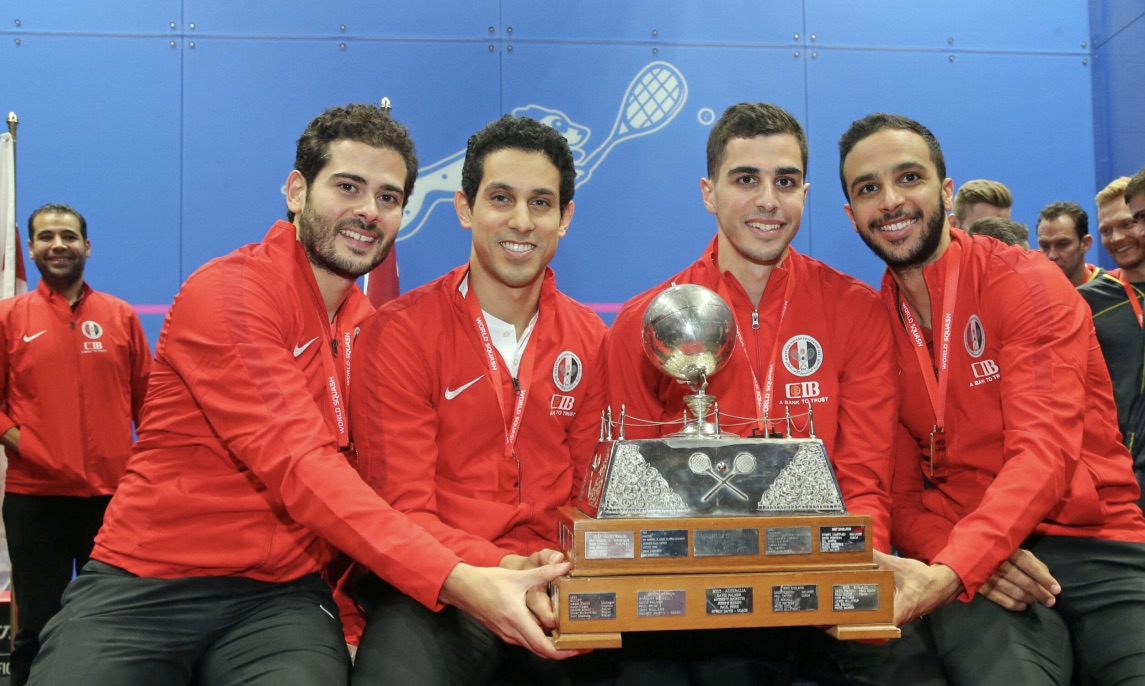
Egypt retain the Men’s World Team Championship trophy after beating England at the Squash On Fire Club in Washington DC
Fontaine pledges closer ties with PSA to grow the game
By HOWARD HARDING – Squash Mad International Correspondent
In a New Year message to the global squash community, World Squash Federation President Jacques Fontaine hails a new era for the game after a challenging 2019. The recent appointment of William Louis-Marie as the Federation’s new Chief Executive Officer is a testament to the new ambition of WSF.
The former AIBA Executive Director took up his role earlier this month and met the sport’s leading players and delegates from National Federations around the world at the WSF Men’s World Team Championship in Washington DC. Fittingly, Egypt celebrated their stranglehold on the sport by retaining the title after beating England, the birthplace of the sport, in the final.
“The World Championship provided the perfect climax to 2019, not only attracting the world’s top players but also many of the sport’s leading officials – giving William Louis-Marie the perfect springboard to plan for 2020 and beyond,” said Fontaine.
“One of the key components to our future success is our strengthened relationship with the PSA and this partnership was clear to see in the support they provided to our hugely-successful World Team Championship, the first to be held in the USA.
“After successful presentations of the sport in the Pan-American Games, the South Asian Games and the SEA Games in 2019, the WSF will stage three major championships in 2020: the World Masters in Poland, the World Junior Championships in Australia and the Women’s World Team Championship in Malaysia and we are confident this will foster the potential of our sport and greatly benefit our National Federations that host these events.
“Furthermore, plans are underway to relaunch the World Cup in 2020, one of our major assets that needs to be part of our portfolio of tournaments organised under the WSF umbrella.
“In addition to strengthening our governance and independence with a clear focus on generating new revenues, we will be working to establish stronger relationships with major Continental and International sporting bodies to ensure the presence and exposure of squash the world over.
“After painstaking work with the PSA, the launch of the WSO (World Squash Officiating) platform will definitely improve our officiating the world over and support our members locally.
“Our focus will remain on expanding our sport globally and ensuring an emphasis on coach and referee training to support a balanced development of our sport from grass roots to the elite level.
“Underlying our plans for 2020 will be the bid to establish stronger cooperation between all squash stakeholders, as squash will continue to address all challenges responsibly and professionally for the best interest of our sport.”
Louis-Marie added: “In 2020, with the support of the Board and the Executive Committee, I am convinced we will keep building on the vitality of our sport, the support of our partners, the outstanding performances of men and women players the world over and the dynamism of our members to showcase squash as one of the most entertaining racket sports in the world.”
Fontaine concluded: “I’m confident 2020 will be a rich and successful year for squash and I’m looking forward to closely cooperating with all our members for the betterment of our sport.”
WSF members pictured at the 2018 annual meeting
Pictures courtesy of WSF
Wales scrum-half Webb eligible for 2020 Six Nations
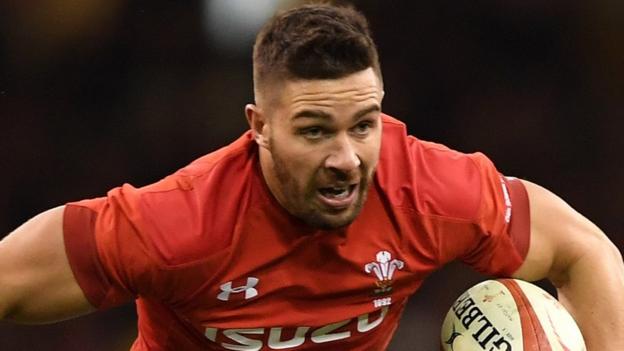
Scrum-half Rhys Webb is eligible to play for Wales in the 2020 Six Nations after announcing he will return to Ospreys from Toulon.
The Welsh Rugby Union have confirmed Webb will be eligible for immediate selection after being given a "six-month dispensation".
It was announced Toulon had agreed to Webb's early release from his contract for family reasons.
Webb last played for Wales against South Africa in December 2017.
The 31-year-old will be available for the opening game against Italy on 1 February and he will battle for a place in Wayne Pivac's first squad with Gareth Davies, Tomos Williams and Aled Davies.
Webb had been ineligible for Wales since the WRU brought in a selection policy in October 2017 that meant players would not be picked if they had won fewer than 60 caps and opted to move away from Wales.
The British and Irish Lions scrum-half had announced he was signing for Toulon from Ospreys and missed the 2019 World Cup in Japan.
A Welsh Rugby Union statement said: "The Welsh Rugby Union can confirm Rhys Webb will be eligible for selection for the 2020 Guinness Six Nations.
"It was announced earlier this week that Top 14 side Toulon had agreed to Webb's early release from his contract for family reasons.
"Following the 31-times capped scrum-half's contractual commitment to return to play his club rugby in Wales with the Ospreys next season, the Professional Rugby Board (PRB) has agreed to an application from the player and his representative to allow a six-month dispensation from the Senior Player Selection Policy, during which new Wales head coach Wayne Pivac can consider Webb for selection.
"In accordance with Wales' Senior Player Selection Policy, the 31-year-old British and Irish Lion was originally eligible for international selection from 1 July 2020.
"However, the dispensation granted by the PRB enables Webb to compete for a place in Pivac's first campaign in charge of Wales, starting at Principality Stadium against Italy on 1 February.
NHL experts buy/sell Panthers as a top Atlantic team, Jets trading for a defenseman and more

It's a new year, and the holiday break is well behind us. So we pulled together a panel of NHL experts to weigh in on some of the hot topics around the league as the 2019-20 season turns to its fourth month.
In this edition, we're buying or selling:
The Panthers as a top-three Atlantic Division team
The Red Wings as the worst team of the past five years
A goalie shift for the Penguins
The Jets as a defenseman-seeking trade deadline buyer
1. Yes, the Atlantic Division is loaded. But the Florida Panthers will still finish with a top-three seed.
Greg Wyshynski, senior NHL writer: Sell, but only because the teams the Panthers will be looking up at in the standings are the Leafs, Bruins and Lightning. Florida is on pace for around 95 points but could go over that if its defense improves and if it gobbles up points against the bottom of the division.
Dimitri Filipovic, hockey analytics writer: Sell. Behind the Bruins, those spots will be spoken for by the Lightning and Leafs. Since making a coaching change, Toronto has completely flipped the script on its season. Under coach Sheldon Keefe, it is 13-4-1 and has been holding a lead for 51.2% of its game time, both of which are league bests. And while everyone has been making a big deal of Tampa Bay's seemingly pedestrian record this season, it is quietly lurking as a dominant team too. It'll solidify a top-three spot in the Atlantic once it finally starts to cash in its games in hand in the coming weeks.
Victoria Matiash, fantasy hockey analyst: Sell. The Bruins, Leafs and Lightning (looking a lot more like last season's version these past few games) are too strong to hurdle. But if they tighten up defensively and learn to win on the road, the Panthers will squeeze in as the Atlantic's only wild card.
Tim Kavanagh, NHL editor: Buy. For a team with a goal differential in the single digits, the Panthers' point pace is pretty much on track with what we'd expect. However, they haven't gotten the stellar version of goalie Sergei Bobrovsky with any real consistency yet. Once he turns a corner, they have the ability to go on a serious run.
Vince Masi, ESPN Stats & Information: Sell. Statistically, they are one of the roller-coaster-type teams. They join the Wild as the only teams to average a half-goal above expectation both for and against per 60 minutes at 5-on-5 this season. Too much inconsistency will be their downfall.
2. The Detroit Red Wings are the worst team we've seen in at least five years and won't reach 60 points.
Wyshynski: Buy. Sixty points? That's a pretty generous ask for a team that's on pace for 46 and has absolutely no desire to improve. Prospect Alexis Lafreniere isn't going to draft himself, you know.
Filipovic: Buy. The Wings are currently on pace to finish the season with 46 points and a minus-134 goal differential. The 2016-17 Avalanche had similarly horrendous numbers, but that was largely due to catastrophically bad goaltending, as their underlying numbers weren't actually all that terrible. This Red Wings group is the worst team we've seen since the Tim Murray Sabres that were actively tanking in the hopes of landing high draft picks. Hopefully for Detroit's sake, it is rewarded with Lafreniere for its efforts.
Matiash: Buy. Looking at the arithmetic, the Wings realistically need an exceptionally hot run over two to three weeks to even flirt with 60. Who -- on a team led by Tyler Bertuzzi with 31 points -- is going to provide that boost?
Kavanagh: Buy. With 0.56 standings points per game as of Jan. 2, it's looking grim. It will be nice for Detroit to get an injection of high-end talent with (presumably) the No. 1 or 2 pick in the 2020 draft, but the Wings are going to need at least two full offseasons for the "Yzerplan" to take effect.
Masi: Buy. Essentially over the past quarter of the season, the Red Wings have been playing at a 28-point pace, and there haven't been any signs of improvement. One would actually believe they are closer to being the worst team since the 1999-2000 Thrashers who went 14-57-7 for 39 points.
3. To keep pace in the Metropolitan Division, the Pittsburgh Penguins need to keep starting Tristan Jarry in goal over Matt Murray.
Wyshynski: Sell. This is just a matter of playing the hot hand if you're Mike Sullivan. Jarry has been the better goalie this season, no doubt about it. But Murray is still a guy who can win you six of seven games as he did back in October.
Filipovic: Buy. At least for the time being, Jarry has clearly proved himself to be the superior option. His .938 save percentage this season is tops among all goalies with double-digit appearances, and his plus-15.2 goals saved above average ranks him behind only Darcy Kuemper. Who knows how long it'll last considering that (a) the sample size is still under 20 games, and (b) Jarry has never really done this before at this level. But similar to when Murray burst onto the scene and surprisingly took the crease for himself in Pittsburgh, the volatility at the position lends itself to riding the hot hand for as long as you can.
Matiash: Buy, as long as Jarry continues to dominate in net while Murray struggles regularly. And that script doesn't appear to be flipping anytime soon. Anyone familiar with my fantasy coverage will be well aware of my enduring astonishment at the reluctance to invest in Pittsburgh's (slightly) younger goaltender. Jordan Binnington's sample size of work was even smaller this time last year, and he went on to win the Stanley Cup. Why are we waiting for Jarry to stumble?
Kavanagh: Sell. Echoing what Greg notes, this will be all about the NHL's version of load management -- i.e. finding the right mix of whom to start when. The time to lean on one netminder is during a playoff run, and Jarry gets my vote for that honor if the Pens qualify.
Masi: Buy. Do you know which of these goalies ranks in the top five in save percentage above expectation on unblocked shots, according to Moneypuck.com? Jarry. Do you know who ranks in the bottom three in the same department? Murray. Ride Jarry.
4. The Winnipeg Jets will trade for a defenseman at or before the trade deadline.
Wyshynski: Buy. The Jets will get Dmitry Kulikov back this month, but that blue line could use a bit more than Dmitry Kulikov.
Filipovic: Buy. They've been making it work all season with a patchwork combination of smoke and mirrors -- and Connor Hellebuyck standing on his head -- but that's not an especially promising recipe for future success. There aren't any real game-changers at the position readily available on the open market, but it probably wouldn't make sense for the Jets to push all their chips in with this group even if there were. As long as they keep hanging around a wild-card spot, a half-measure upgrade that shouldn't cost much makes more sense. Considering the volume of minutes Luca Sbisa and Anthony Bitetto are eating up at the moment for them, it shouldn't be too difficult to make improvements at the position.
Kavanagh: Buy. It's amazing how well the Jets have done thus far without a standout blueliner, as they wait to see what Dustin Byfuglien is going to do (and that situation remains as muddled as ever). GM Kevin Cheveldayoff should reward this group for its perseverance by adding someone more closely resembling a No. 1 defenseman -- and the sooner, the better.
Masi: Buy. Last year, Cheveldayoff made a whopping six trades on deadline day, and the Jets have their own 2020 draft choices in the first three rounds to make a deal. According to Moneypuck.com, the Jets have two of the five worst defensive pairings in terms of expected goal differential per 60 minutes.
Predicting what baseball will look like during the 2020s
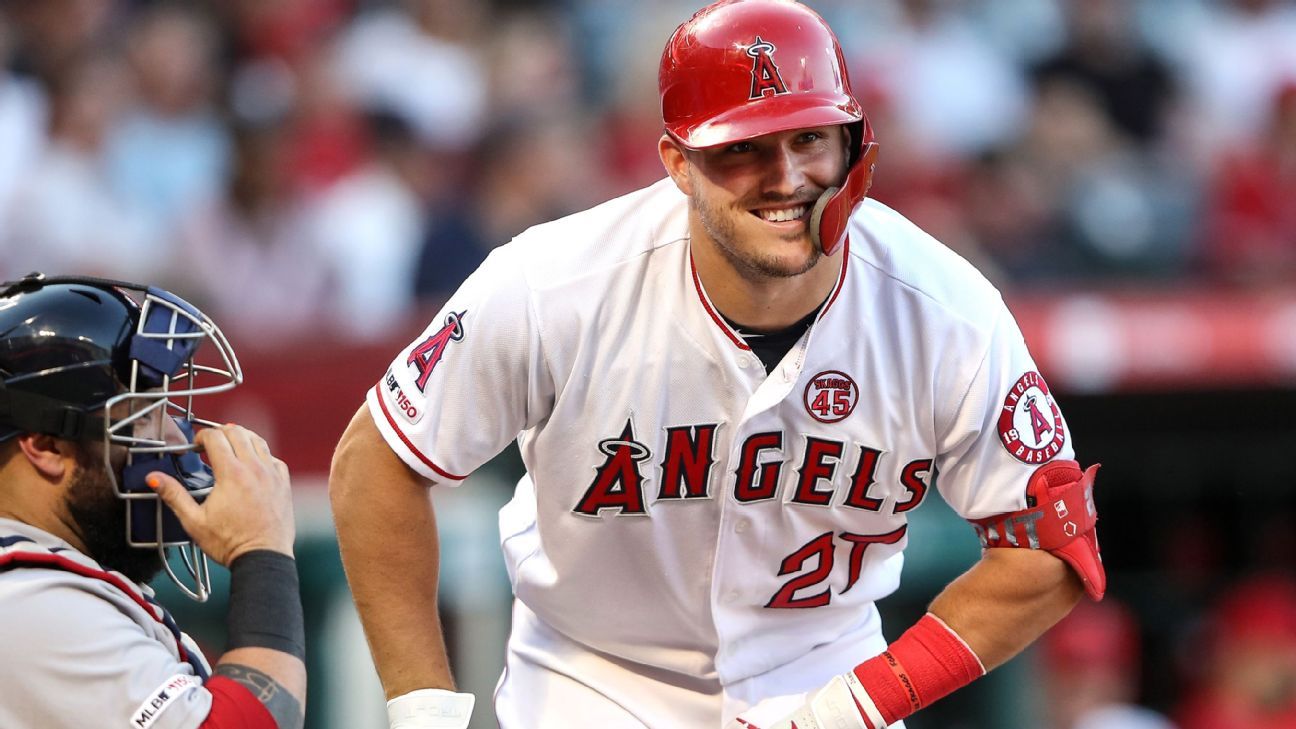
One hundred years ago, baseball underwent changes that writer and historian Bill James described as "the most sudden and dramatic of the 20th century."
A number of things happened around the same time. The fallout from the Black Sox scandal descended upon the sport during the latter stages of the 1920 season. Baseball hired its first commissioner in Kenesaw Mountain Landis. The dead ball era was put to rest in the form of several fundamental changes to the way the game was played on the field. That development was aided by the sudden ascension of star pitcher Babe Ruth to almost mythical status as the game's first -- and perhaps still greatest -- power hitter. The times were a-roarin'.
As we enter a new decade, it's far too soon to say if we can call this another version of the Roaring Twenties or the 21st-century Jazz Age. What seems certain is that while change is and has been afoot in baseball, the on-field product is not going to morph as abruptly or fundamentally as it did a century ago. Things will evolve, as they always have, but the changes won't necessarily jump off the sports page and poke us in the eye.
What follows is far less analytical than speculative, and there will be a fair bit of fantasy and wishful thinking peppered in. These are my musings on what the next decade might look like in baseball, a mix of what seem like clear trends and, frankly, what I'd like to see happen.
Buster Olney's top 10 relief pitchers: Lights out in 2019, no guarantees in 2020
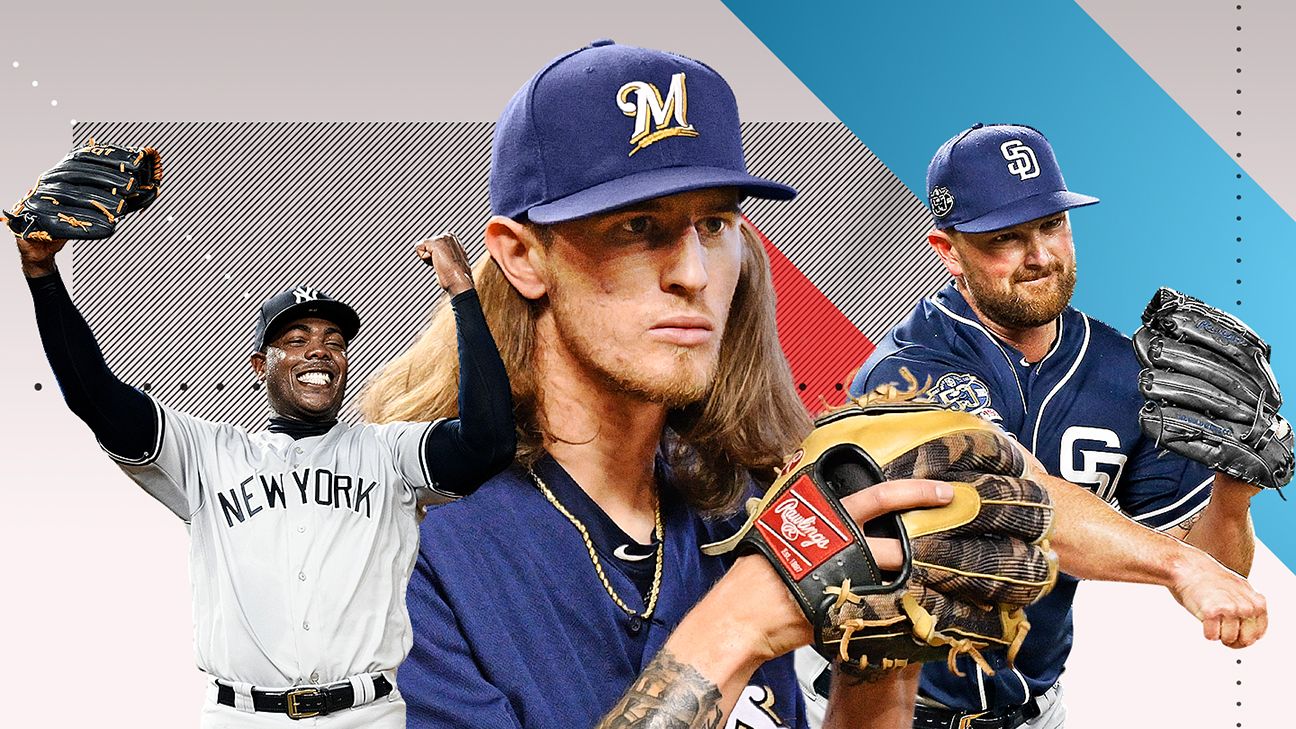
Call it the Frankenstein Plan for building a reliever. Teams will sort through the graveyard of pitching careers and see if there are any pieces especially usable. A failed starter with great curveball spin, perhaps. A waived reliever who might've relied too much on a flat sinker. The analysts will find these guys, and go about the work of reconstructing a modern-day reliever.
Just look at the histories of most of the best bullpen arms in baseball. Josh Hader: a 19th-round pick of the Baltimore Orioles, twice traded. Kirby Yates: undrafted out of college following Tommy John surgery, bounced around four organizations. Nick Anderson: an independent ball alum, after he was a 32nd-round pick.

Wollaton Park will welcome athletes for the 2020 Saucony English National Championships
Following a festive break, the domestic cross country season continues with county and area events followed by the Saucony English National Championships.
Taking place on Saturday February 22, the event will be held for the third time at Wollaton Park in Nottingham after last year taking place at the Harewood House Estate near Leeds.
This will be the 133rd time the senior men’s race has been staged since the first in 1876 and the 88th time the senior women’s race has also taken place.
The closing date for entries is Friday January 10, with late entries not accepted. Online entries can be logged at race-results.co.uk/results/2020/natxc20e.php
The 10-race programme will get under way at 11:00 when the English Cross Country Association president, the Midlands official Rita Brownlie, will welcome athletes and spectators to the venue which has the impressive Wollaton Hall as a backdrop.
ATP Cup: Cameron Norrie gives Great Britain a winning start against Bulgaria
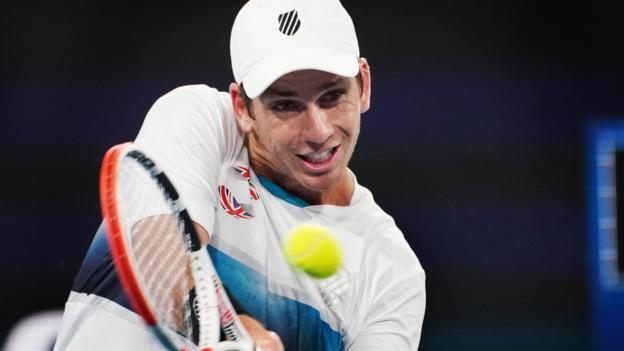
Cameron Norrie ensured Great Britain started the inaugural ATP Cup with a victory after battling past Bulgaria's Dimitar Kuzmanov in three sets.
British number two Norrie, ranked 53rd, won 6-2 3-6 6-2 against the world number 423 in Sydney.
Dan Evans takes on US Open semi-finalist Grigor Dimitrov in the second singles match later on Friday.
Jamie Murray and Joe Salisbury then play the doubles rubber in the best-of-three tie.
After taking on Bulgaria, Britain face Belgium on 5 January and Moldova on 7 January in their other round-robin ties.
If it had not been for Andy Murray's late decision to use his protected world ranking of two, Great Britain might not have qualified for the inaugural event because their other players may not have been ranked high enough.
But then the 32-year-old Scot, who only had career-saving hip surgery last January, announced on Saturday he would not play after "a setback" with the pelvic injury he has been nursing since the Davis Cup finals in November.
James Ward was called up alongside British number one Evans and Norrie as the singles players, with doubles specialists Jamie Murray and Salisbury completing the five-man team.
The 24-nation event features six groups of four teams, who each play three round-robin ties. The ties - comprising two singles matches and one doubles - are best of three.
The six group winners, plus the best two runners-up, will progress to the quarter-finals.
Shock exit on day one for BJO hopeful Lewis Anderson
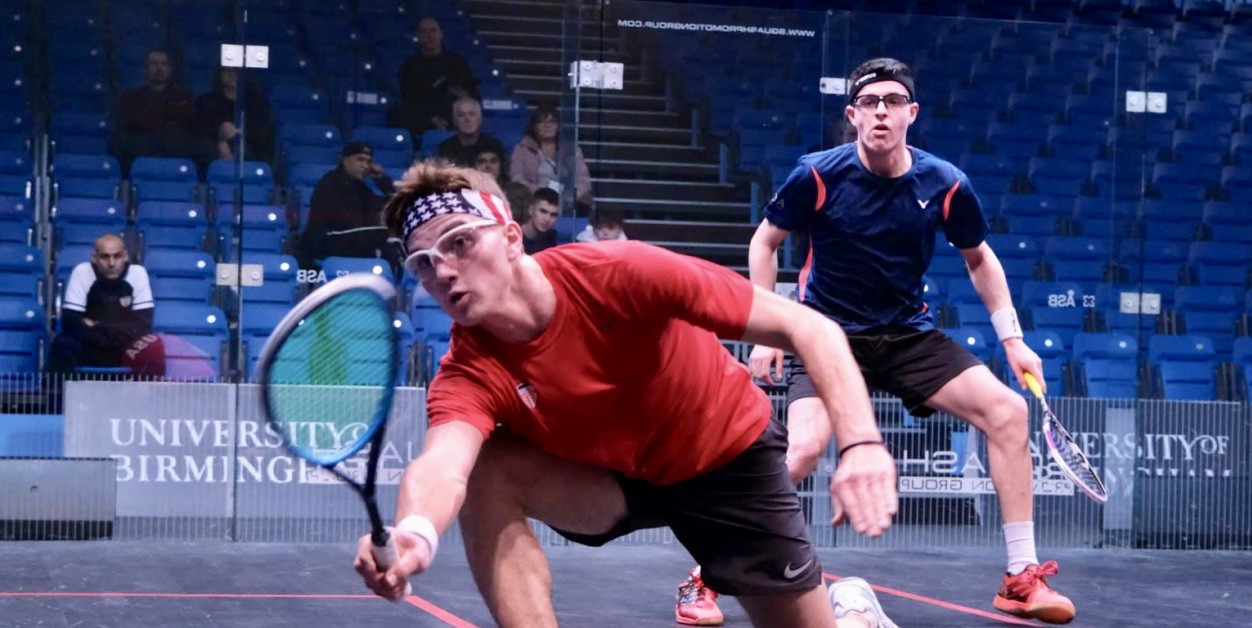
Myles McIntyre wins through against Lewis Anderson
Team USA go the extra Myles
By DONNA HELMER – Squash Mad Correspondent
Team USA punched above their weight as the Dunlop British Junior Open 2020 got under way in Birmingham.
With 671 players representing 56 nations, and all with high hopes on day one, the top seeds were keen to spend as little time on court as possible, with some in action twice.
And on home soil, England’s 3/4 seed Lewis Anderson, the 2019 World Junior Championship bronze medallist from Edgbaston Priory, swiftly went two games up against American Myles Mcintyre in the BU19s before the underdog (pictured in disbelief at the end of the match) stunned a shellshocked Anderson 7-11, 5-11, 11-9, 11-8, 11-8 in 52 minutes in the biggest and final upset of the day.
Earlier in the BU19 competition, Mcintyre’s compatriot, [33/64] Nicholas Spizzirri saw off two-time BU13 champion [9/16] Mohamed Elshamy of Egypt in 64 minutes: 8-11, 11-9, 11-9, 3-11, 11-9.
There was further woe for England as GU11 5/8 seed Harriet Broadbridge was toppled by Team USA’s Layla Gupta 11-7, 12-10, 11-5, while in the GU13s, 5/8 seed Charlie McCrone was outfoxed by Eliza Schuster 11-8, 11-7, 12-10.
It didn’t all go Team USA’s way however with BU13s [5/8] Christian Capella losing a tight battle 12-10, 13-11, 8-11, 12-10 to unseeded Abdullah Nawaz of Pakistan.
In the BU19s, Egyptian top seeds Moustafa El Sirty lost just nine points in a straight games victory, while [2] Yahya Elnawasany, the reigning BU17 champion, made light work of Canada’s [33/64] Mitchell Kahnert in the final encounter of a jam-packed first day.
GU19 top seed Jana Shiha of Egypt was a convincing 11-4, 11-2, 11-7 winner over England’s [17/32] Polly Clark while Malaysian second seed Aifa Azman – the three-time BJO champion, never looked overly troubled by Japan’s [17/32] Ayumi Watanabe.
BU17 top seed Sam Todd of Yorkshire made a convincing start to his bid for a third BJO title with an 11-4, 11-1, 11-2 defeat of Luxembourg’s [33/64] Amir Samimi. Meanwhile, Malaysian second seed Muhammad Amir Amirul Azhar overcame a feisty start from Poland’s [33/64] Jakub Gogol to eventually win 13-11, 11-4, 11-1.
Malaysian GU17 top seed Aira Azman – younger sister of Aifa – started off proceedings with a solid opening victory and later dispatched France’s Ninon Lemarchand 11-5, 11-4, 11-7 as she seeks to add to her 2018 U15 title.
Nicholas Spizzirri beats Mohamed Elshamy despite the Egyptian’s dive across court
Egypt’s Sana Ibrahim then rounded off day one in the category with a dashing 11-1, 11-3, 11-1 defeat of Spain’s Icia Riveiro.
It was a race to get off court between the top two seeds in the BU15 event, with England’s Jonah Bryant requiring a quarter of an hour to see off Scotland’s [33/64] Rory Campbell in straight games while Pakistan’s Muhammad Hamza Khan took just 13 minutes to overcome [33/64] Guido Lindner of The Netherlands.
The Malaysian-Egyptian GU15 stronghold on the seedings showed little sign of being disturbed, with Asian top seed and U13 2018 champion Sehveetrraa Kumar winning her two opening day encounters as did Egyptian second seed Fayrouz Abouelkheir.
Egyptian top seed Moustafa El Sirty in superb form on day one
Meanwhile in the BU13s, Egypt will take some stopping, with top seed Mohamed Zakaria and second seed Youssef Salem both in dominant form.
BU11 top seed Jayden Oon of Malaysia got stronger as his second-round match progressed, while Egyptian second seed Yassin Kouritam saw off England’s George Barker.
With GU11 top seeds Jana Mohamed of Egypt and England’s Mariam Eissa given a bye through to round two, it was over to 3/4 seeds Maya Mandour and Harleein Tan from Egypt and Malaysia respectively to wow the crowds with ruthless displays.
England’s Nadiya Ismail failed to win a single point against Tan while Mandour was nearly as frugal in her 11-0, 11-2, 11-1 victory over England’s Zarminae Raja.
The Dunlop British Junior Open 2020 continues today. Watch live streaming via englandsquash.tv
Report by DONNA HELMER (England Squash). Edited by ALAN THATCHER.
Pictures by Steve Cubbins courtesy of England Squash










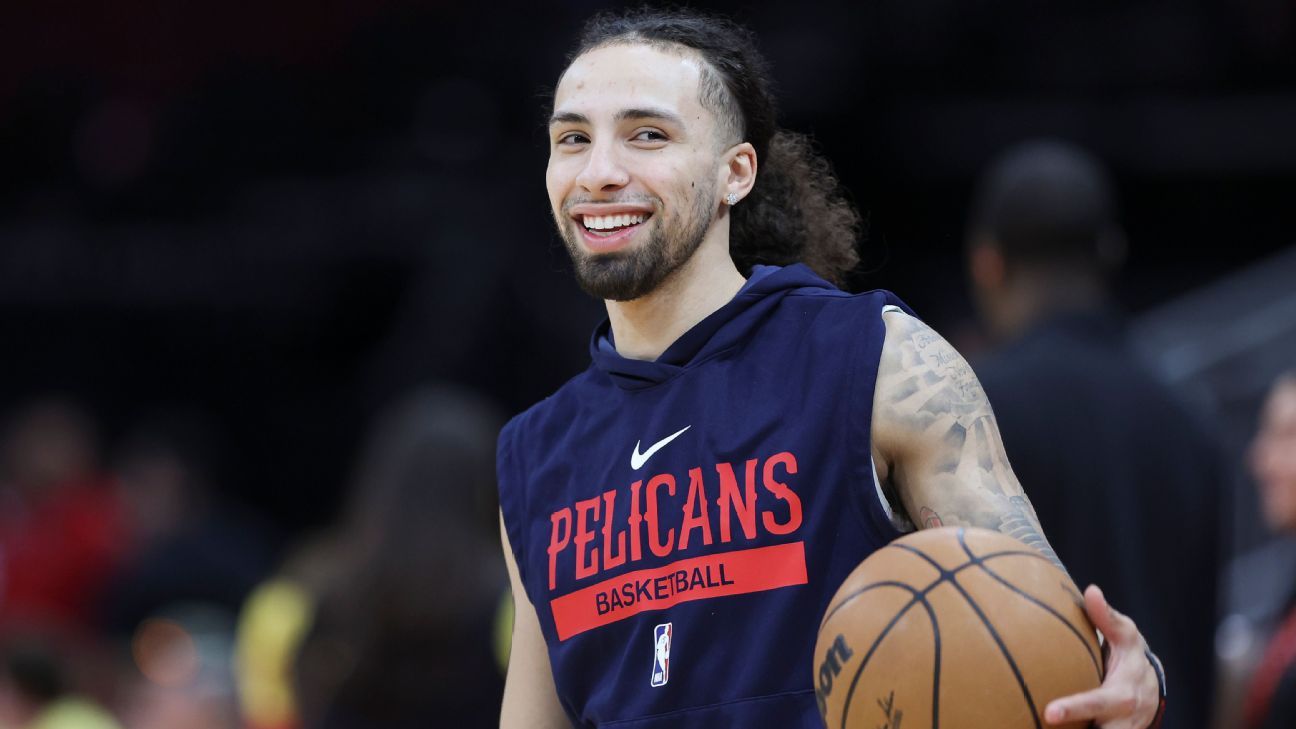




 Phone: (800) 737. 6040
Phone: (800) 737. 6040 Fax: (800) 825 5558
Fax: (800) 825 5558 Website:
Website:  Email:
Email: 






